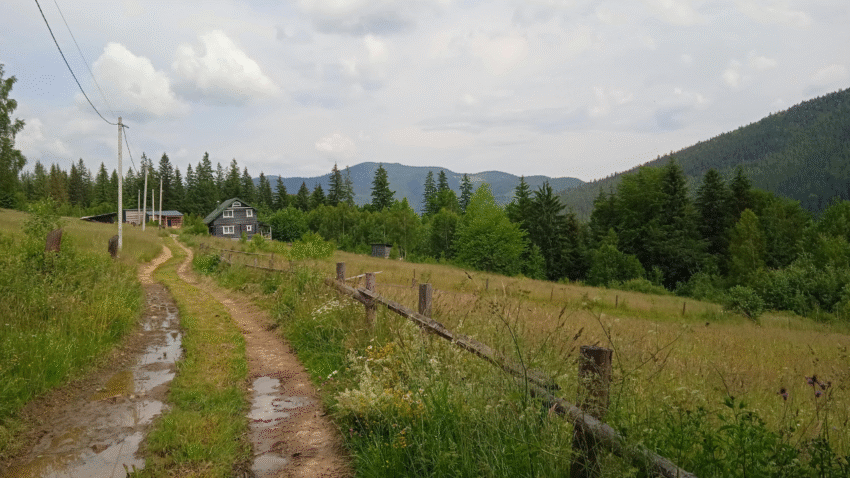Introduction
As the seasons shift, your fence faces new challenges—from heavy spring rains and summer sun to autumn winds and winter snow. Each transition exposes weak points and accelerates wear if not addressed. Learning how to maintain a fence during seasonal transitions helps you protect its strength, appearance, and lifespan. With regular inspections and simple adjustments, you can stay ahead of damage and enjoy a fence that stands tall year-round.
Why Seasonal Fence Maintenance Matters
Each transition between seasons brings unique risks to your fence:
- Winter to Spring: Melting snow and heavy rains soften soil, weakening posts.
- Spring to Summer: Heat and humidity promote mold, mildew, and fading.
- Summer to Fall: Windstorms and falling debris test structural strength.
- Fall to Winter: Freeze-thaw cycles and snow add pressure to posts and rails.
Routine seasonal care prevents minor issues from turning into expensive repairs.
Step-by-Step Guide to Maintaining a Fence During Seasonal Transitions
Step 1: Inspect the Fence Thoroughly
Before each season change, walk the entire fence line. Look for:
- Leaning or unstable posts.
- Loose or cracked rails and panels.
- Rusted fasteners or corroded hardware.
- Splintered, warped, or discolored boards.
Tip: Write down repairs so nothing gets overlooked during your maintenance.
Step 2: Clean the Fence
Cleaning helps prevent long-term damage and makes inspections easier.
- Wood: Scrub dirt, algae, or mildew with a brush and mild detergent.
- Vinyl: Hose down or wipe with soap and water.
- Metal: Remove rust spots and touch up with rust-resistant paint.
Pro Tip: Clean in early spring and early fall for best results.
Step 3: Reinforce Fence Posts
Posts often suffer most during seasonal changes.
- Reset leaning posts with fresh gravel and concrete.
- Add post anchors to protect wooden posts from soil moisture.
- Backfill soil firmly around posts after rain or snowmelt.
Step 4: Repair Rails and Panels
Rails and pickets often shift or loosen when temperatures fluctuate.
- Tighten screws and replace rusted nails with exterior-grade fasteners.
- Replace warped or broken rails with pressure-treated wood.
- For chain-link fences, re-tighten tension wires and add mid-rails if sagging.
Step 5: Seal and Weatherproof
Apply protective treatments at seasonal transitions to prepare for what’s ahead.
- Wood: Apply stain or sealant every 2–3 years. Do this in spring or fall when temperatures are mild.
- Metal: Apply anti-rust coating before winter.
- Vinyl: Use UV protectant sprays in late spring before peak sun exposure.
Step 6: Prepare for Seasonal Challenges
- Spring: Check drainage and add gravel at post bases to handle heavy rains.
- Summer: Inspect for sun fading—reapply protective coatings and repair cracks.
- Fall: Trim nearby trees and reinforce posts to prepare for storms.
- Winter: Remove heavy snow or ice buildup and inspect posts for frost heave.
Step 7: Maintain Gates and Hardware
Gates see more use than any other fence section.
- Lubricate hinges and locks every season.
- Adjust latches if seasonal shifting causes misalignment.
- Add diagonal bracing to gates that sag with temperature swings.
Step 8: Manage Landscaping Around the Fence
Vegetation contributes to seasonal fence wear.
- Trim bushes and vines away from panels to prevent trapped moisture.
- Clear weeds and grass along the base to prevent insect damage.
- Avoid piling mulch directly against wood posts to reduce rot.
Step 9: Monitor Soil Erosion
Erosion is common during seasonal rainfall and melting snow.
- Fill in washed-out areas with gravel and compacted soil.
- Install edging or retaining boards if needed.
- Add drainage channels to direct water away from posts.
Common Mistakes to Avoid
- Mistake: Only inspecting once a year.
Solution: Check fences at least twice yearly—spring and fall. - Mistake: Ignoring small cracks or splits.
Solution: Treat or replace boards early before they spread. - Mistake: Skipping sealant.
Solution: Apply protective coatings before extreme weather seasons. - Mistake: Using the wrong fasteners.
Solution: Always use galvanized or stainless steel screws outdoors. - Mistake: Forgetting about the gate.
Solution: Reinforce and lubricate gates during each seasonal transition.
Extra Fence Tips & Hacks
- Install kickboards: Protect the bottom of fences from soil and water damage.
- Use gravel strips: Help with drainage and reduce weed growth along the fence base.
- Add decorative post caps: Prevent water infiltration and extend post life.
- Create a seasonal checklist: Helps keep maintenance organized and consistent.
For related care, check out our guide on how to reinforce a fence for seasonal changes—reinforcement and maintenance together ensure maximum durability.
Conclusion
Learning how to maintain a fence during seasonal transitions protects it from weather extremes, soil movement, and everyday wear. By inspecting, cleaning, reinforcing, weatherproofing, and adjusting for each season’s unique challenges, you’ll extend the lifespan of your fence and save money on repairs.
Pro Tip: Think of seasonal transitions as checkpoints—by giving your fence attention at these times, you’ll always be a step ahead of damage.
Bookmark this guide and use it each season—your fence will reward you with strength, beauty, and reliability year-round.
